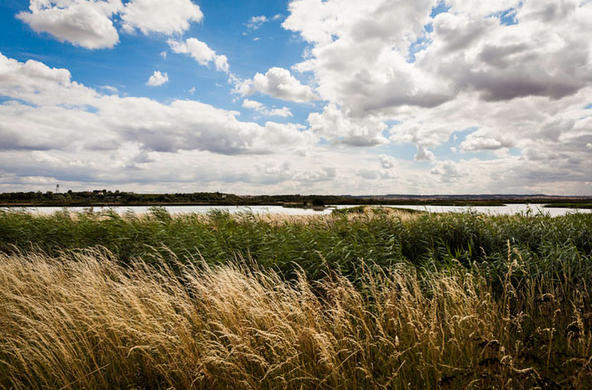Our homes are filled with things that we use only on rare occasions, but still really need. Think about fire extinguishers, aspirins, automobile jacks, or plumber's helpers. We use these objects less than 1 percent of the time, yet our lives would be unpleasant without them.
Likewise, streams use their floodplains just once in a while, but they (and we) really need them. Why does a stream need a floodplain? As I write this, it has been sunny and dry for several days, and the small creek running behind my office is maybe 15 feet wide and calf-deep, fed by the ground water that has slowly percolated through the soil from past rain and snow. The water doesn't even begin to fill the channel, and the floodplain is dry.
But suppose tomorrow afternoon we get a real frog-drowner, and it rains 2 inches. This amounts to more than 800 million gallons of water falling on the 24 square mile watershed. All of that water has to go somewhere — and where it goes is towards the creek.
This means that the channel that looks far too big for the stream today will be far too small for the rush of floodwaters tomorrow. Flood flows often are 100 times to more than 1,000 times greater than stream flows during low water. In response, the stream spills onto its floodplain to move all that water. During floods, water flows fast in the channel and slow in the floodplain — this spreads out the flood peak so that flood waters don't all arrive at the same time downstream.
Floods carry a lot of energy, too. If all of the water from that two-inch rainstorm were to flow to the Hudson, it would expend more than 1 million kilowatt-hours of energy on its way (a typical American house uses about 1,000 kilowatt-hours of electricity per month). As we know from last fall's floods, this energy can tear up stream banks and property. But as the flood waters spread over a flood plain, much of this energy can be harmlessly dissipated.
If I decide I want to "reclaim" the floodplain by building dikes and levees to keep the stream in its channel so I can build something on the floodplain, the water will rise higher and move downstream much more quickly. All of that water and energy will sweep down onto my downstream neighbors, and cause more severe flood damage to their properties.
So floodplains allow for the gentle dissipation of the huge amounts of water and energy that are generated by rainstorms (or snowmelt). Human activities that destroy floodplains reduce the protections that they provide, and can seriously increase flood damages downstream.
A second lesson many people have learned the hard way is that an area marked as a floodplain will flood. It's not a question of if but when it will flood. It is a loser's game to bet that something built on a floodplain will stay dry.
Third, as every birdwatcher, hunter, and amateur botanist knows, floodplains are valuable habitats. The combination of rich soils deposited by floodwaters, a nearby source of water in the stream, and (often) lower levels of human disturbance makes floodplains biological hotspots.
Here are a few suggestions about how best to manage floodplains. First, know where floodplains are — they can be surprisingly large even for small streams, and are easy to underestimate during periods of low water. Almost 8 percent of Dutchess County is in a 100-year floodplain. Consult FEMA maps (www.msc.fema.gov) to find your local floodplains.
Second, make sure any new land uses on the floodplain are not damaged by flooding and do not block the floodway. Parks, nature preserves and agriculture that can tolerate flooding are good choices.
Third, if incompatible land uses have already been put onto floodplains (and this is unfortunately very common in Dutchess County), evaluate the options (including abandonment) based on the long-term costs and benefits of all options, including effects on downstream properties.
Healthy floodplains are valuable to both people and nature, and deserve to be managed thoughtfully.
Dave Strayer is a freshwater ecologist at the Cary Institute of Ecosystem Studies in Millbrook.






